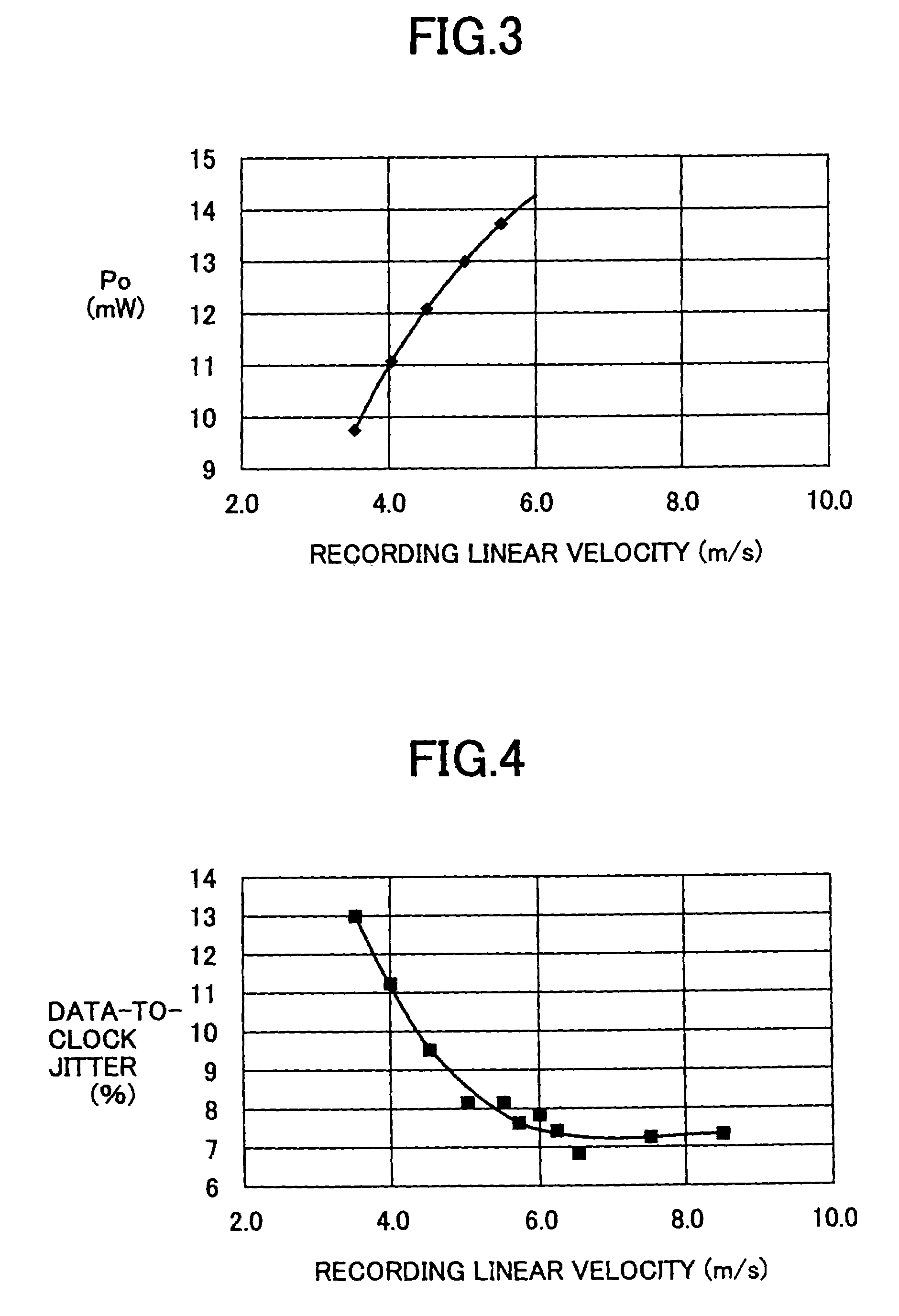Optical recording method and apparatus for an optical storage medium
a recording method and optical storage medium technology, applied in the field of optical storage medium optical recording methods and apparatuses, can solve the problems of many control parameters that must be controlled, deterioration of jitter that is unexpectedly serious, and inability to improve jitter, so as to achieve convenient recording power control, prevent deterioration of jitter sufficiently, and achieve the effect of convenient operation
- Summary
- Abstract
- Description
- Claims
- Application Information
AI Technical Summary
Benefits of technology
Problems solved by technology
Method used
Image
Examples
Embodiment Construction
[0040]A description will now be provided of preferred embodiments of the present invention with reference to the accompanying drawings.
[0041]FIG. 11 shows an optical recording apparatus which carries out one embodiment of the optical recording method of the present invention.
[0042]As shown in FIG. 11, the optical recording apparatus of the present embodiment generally includes a control unit 10, a recording pulse pattern generator 12, a pickup 14, a spindle motor 16, and a turntable 18. The recording pulse pattern generator 12 includes a write power allocation unit (“WPA”) 21, a write power control unit (“WPC”) 22, and a recording pulse pattern supply unit (“RPPS”) 23.
[0043]Suppose that, in the optical recording apparatus of FIG. 11, a high-density optical storage medium 20 (for example, a DVD) is placed onto the turntable 18, and, during recording or reproducing operation of the optical recording apparatus, the storage medium 20 is rotated at a given rotation speed by the spindle m...
PUM
| Property | Measurement | Unit |
|---|---|---|
| thickness | aaaaa | aaaaa |
| thickness | aaaaa | aaaaa |
| recording frequency | aaaaa | aaaaa |
Abstract
Description
Claims
Application Information
 Login to View More
Login to View More - R&D
- Intellectual Property
- Life Sciences
- Materials
- Tech Scout
- Unparalleled Data Quality
- Higher Quality Content
- 60% Fewer Hallucinations
Browse by: Latest US Patents, China's latest patents, Technical Efficacy Thesaurus, Application Domain, Technology Topic, Popular Technical Reports.
© 2025 PatSnap. All rights reserved.Legal|Privacy policy|Modern Slavery Act Transparency Statement|Sitemap|About US| Contact US: help@patsnap.com



